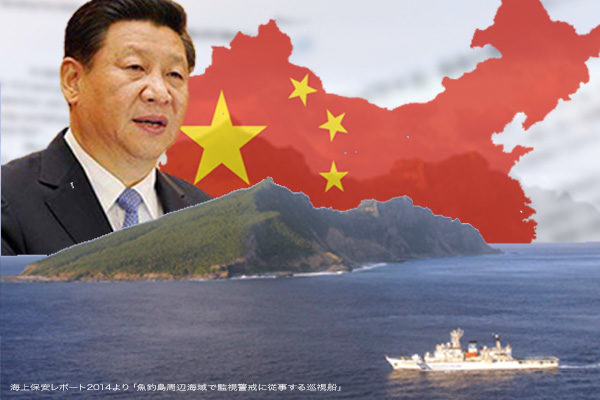While expanding its hegemony under the slogan of “great rejuvenation of the Chinese nation,” China has repeated joint naval and air force exercises in the western Pacific in an attempt to expel U.S. forces from the region in the future. As of now, we cannot but to depend on U.S. nuclear deterrent, mostly strategic nuclear forces, for countering nearly 2,000 Chinese intermediate-range ballistic or cruise missiles that put from Japan’s Okinawa to Guam in their ranges. Additionally neither Japan nor the United States has means to intercept China’s sophisticated DF-17 missile equipped with hypersonic glide vehicle.
China is rapidly expanding its military capabilities in the outer space as well. Its killer satellites are capable of destroying U.S. as well as Japanese satellites. Chinese attacks could affect satellite communications through the global positioning system (GPS) we use every day and command, communications and intelligence gathering by the U.S. and Japanese militaries, preventing us from taking even defensive actions. The U.S. level of awareness of Chinese threats has risen to the highest ever point.
Beijing’s scenario for capturing Senkakus
China has taken control of islands in the South China Sea by force in defiance of a ruling by an international arbitral tribunal and is likely to apply the same forcible attitude to the Senkaku Islands of Japan in the East China Sea. China will try to gradually downgrade Japan’s effective control of the Senkakus to make its claim to the islands as a fait accompli. China will also justify military actions on the islands by having Japan take military actions first in a contingency.
If expecting no U.S. intervention, China would have fishermen land on the Senkakus for distress or other reasons, would land coast guard personnel to protect fishermen and would take advantage of the coast guard’s possible clash with the Japanese coast guard and police to mobilize military forces for protecting coast guard personnel and occupying the islands. During the escalation, China would mount three types of warfare (public opinion, psychological and legal) to justify its actions.
In its report on Chinese military forces released on September 1, the U.S. Department of Defense says that the number of China’s naval ships has topped that of U.S. naval ships. How long could Japan prevent China from making its claim to the Senkakus as a fait accompli if the U.S.-China military balance continues to shift in favor of China?
Japan may now be urgently required to strengthen its effective control of the Senkakus by conducting oceanographic or environmental surveys in waters around the islands and Japan-U.S. joint firing drills on the islands in the first phase and constructing permanent facilities (oceanographic survey, navigation safety and other facilities) on the islands in the second phase. When Japan arrested the captain of a Chinese fishing boat that rammed into Japan Coast Guard ships in 2010, China took retaliatory actions such as the suspension of rare earth exports to Japan and the seizure of Japanese businesspersons. If Japan takes any action, China may conduct even larger-scale retaliation. The Japanese government must develop plans to exit from any emergency regarding the Senkakus.
China is no more a “concern”
Japanese Defense Minister Taro Kono told an online debate sponsored by the Center for Strategic and International Studies on September 9 that China has become Japan’s national security “threat,” although the government still describes China only as a “concern” in this year’s defense white paper. Given the dictatorial Chinese Communist Party’s suppression of information indicated by the novel coronavirus outbreak and its iron-fist approach demonstrated by its suppression in Hong Kong, the Japanese government should formulate a national security strategy positioning China as a “threat to Japan’s national security.”
Kiyofumi Iwata is a member of the Council of the Japan Institute for National Fundamentals and a former Chief of Staff of the Japan Ground Self-Defense Force.


